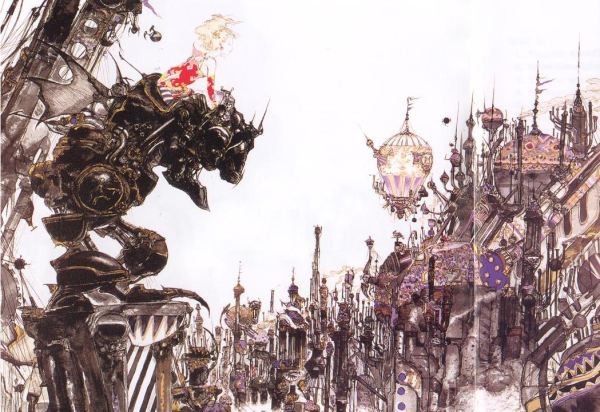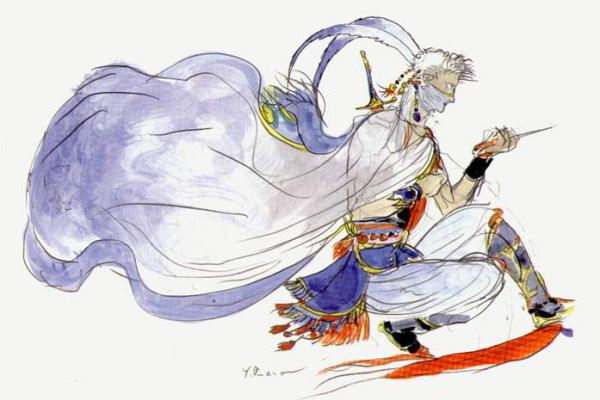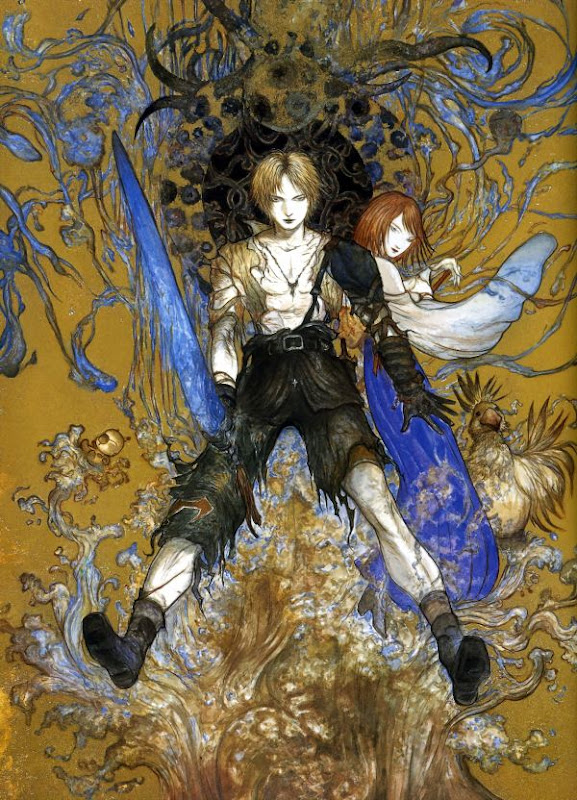Final Fantasy IV: The Complete Collection: the artist within

Since the very beginning one of my favorite aspects of the Final Fantasy games has been their distinctive, lavish visual design. Even in the 8 and 16-bit era the character art, enemy designs and lush environments have been a strength of the series.
Much of the art was created by the Japanese artist Yoshitaka Amano. Amano began working for Squaresoft in 1987 and was responsible for the character designs in every Final Fantasy game through Final Fantasy VI. Because of the technological limitations of the NES and SNES, the games weren’t always the best showcase of his distinctive style. Luckily there was one place you could see his illustrations in all their glory.
After the jump, they’re art books, I swear!

I never owned a strategy guide for the first Final Fantasy game, but I did have a well worn issue of Nintendo Power that included a walk through of the first half of the game. Eventually I knew that part of the game like the back of my hand, but having the magazine in my lap while I played remained an important part of my Final Fantasy ritual. While I no longer needed the maps or strategies or spell lists, I was still utterly engrossed by the beautiful illustrations that accompanied the article. It was my first introduction to Yoshitaka Amano’s work. I did buy the strategy guides for Final Fantasy IV and Final Fantasy VI (released as II and III in America). Both were filled with Amano’s amazing sketches and paintings. I valued them as art books as much as anything else. They were thin, magazine size with glossy paper, but dense with artwork from the games.

When Final Fantasy VII was released I was nearly as excited to get the strategy guide as the game itself. I didn’t realize this at the time, but as Square was making the transition from 2D to 3D for the PlayStation they decided Amano’s trademark sketchy, detail-rich style was not suitable for translation to polygonal characters. The company turned to a new artist, Tetsuya Nomura, whose clean lines and buckle-heavy approach was deemed easier to adapt to 3D. Amano continued to create promotional art, design logos and even returned as character designer for Final Fantasy IX, but the series has essentially belonged to Nomura since 1997.

I wasn’t a fan of Nomura’s simplistic style. The Final Fantasy VII strategy guide’s creators didn’t seem to think much of it either. While the page count had gone up considerably since the previous generation, the amount of pages being spent on illustrations had dwindled considerably. To add insult to injury, not a single piece of Amano’s promotional art for the game was included.

Since then, the utility of a good strategy guide for the increasingly complex, secret packed Final Fantasy games has risen exponentially, but my interest in owning them has plunged. Other people might love pages and pages of charts and lists and statistics, but that has never been where my interests lie. But Square-Enix has an answer!

When you’re publishing twenty year old games on a disc exponentially larger than the original cartridge you find you’ve got all this extra storage space you can use. With Final Fantasy IV: The Complete Collection for the PSP they’ved put all that extra room to good use with things like an expansive beastiary, a music player that allows you to play all your favorite songs and, yes, a gallery of concept art. Looking at Amano’s gorgeous art on a 4.2 inch LCD screen may not be quite the same exprience as flipping through the pages of a book year after year while the paper slowly stiffens with age, but you can’t argue with the sentiment.

Click here for the previous Final Fantasy IV entry.
Brad Grenz lives in the beautiful Pacific Northwest. He writes fake biographies about real bands, blind reviews of games he hasn’t played, and makes good use of his degree in Philosophy eking out a living in web design.






